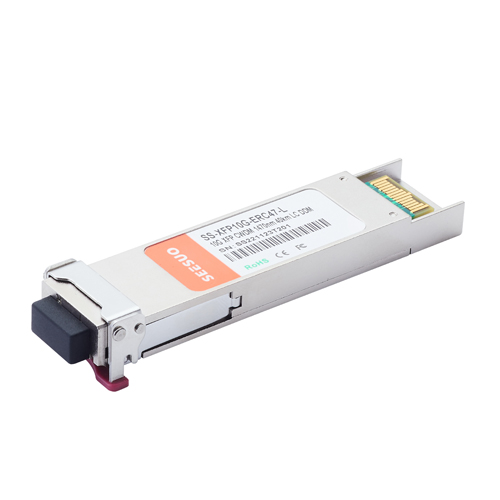- Related articles
- What is wave division multiplexing?
- All Cisco SFP-GE-T's information (List price, Specs, Datasheet PDF, Compatibility matrix)
- All Cisco MGBLX1's information (List price, Specs, Datasheet PDF, Compatibility matrix)
- Optical Transceivers for Cisco WS-C3750V2-24PS-E Switch
- Used in 40GBASE-ER4 Standard Optical Transceiver Models
- Optical Transceivers for Cisco WS-C3560-48PS-S Switch
- All Cisco SFP-GE-Z's information (List price, Specs, Datasheet PDF, Compatibility matrix)
- What Is GYAXTC8Y Fiber Optic Cable?
- All Cisco GLC-ZX-SM-RGD ’s Information (Overview, Features, Data Sheet PDF, Price, Specif
- Used in 10GBASE-LRM Standard optical transceiver models

Definition:
The XFP (10 Gigabit Small Form Factor Pluggable) is a standard for transceivers for high-speed computer network and telecommunication links that use optical fiber. It was defined by an industry group in 2002, along with its interface to other electrical components, which is called XFI.
SFP Vs XFP
“XFP” stands for “10 Gigabit Small Form Factor Pluggable.” With XFP you will surely experience a fast transmission of data in your computer network including your telecommunication links. XFP emerged in the year 2002 along with XFI, one of its electrical components. It was devised by the XFP Multi-source Agreement Group.
SFP stands for “Small Form-factor Pluggable.” It is also a type of transceiver which can make your signal and telecommunications better than the others. Otherwise known as a Mini GBIC, its function is somewhat similar to the GBIC transceiver though it is smaller in form. SFP transceivers are mainly used in telecommunications and data transmission. These modules can link equipment like routers and switches.
XFP Port
A small form-factor pluggable (SFP) transceiver is a compact, hot-swappable, input/output transceiver used in data communication and telecommunications networks. SFP interfaces between communication devices like switches, routers and fiber optic cables, and performs conversions between optical and electrical signals. SFP transceivers support communications standards including synchronous optical networking (SONET)/synchronous digital hierarchy (SDH), gigabit ethernet and fiber channel. They also allow the transport of fast Ethernet and gigabit Ethernet LAN packets over time-division-multiplexing-based WANs, as well as the transmission of E1/T1 streams over packet-switched networks. SFP is also called a mini gigabit interface converter (GBIC) because its function is similar to the GBIC transceiver but with much smaller dimensions.
Conclusion:
XFP modules are hot-swappable and protocol-independent. They typically operate at optical wavelengths (colors) of 850 nm, 1310 nm or 1550 nm. Principal applications include 10 Gigabit Ethernet, 10 Gbit/s Fibre Channel, Synchronous optical networking (SONET) at OC-192 rates, Synchronous optical networking STM-64, 10 Gbit/s Optical Transport Network (OTN) OTU-2, and parallel optics links. They can operate over a single wavelength or use dense wavelength-division multiplexing techniques. They include digital diagnostics that provide management that were added to the SFF-8472 standard. XFP modules use an LC fiber connector type to achieve high density.
SFP transceivers are compatible with a number of communication standards like Ethernet, SONET along with many other standards. SFP is an upgraded version of Giga Bit Interface Converter (GBIC) module. SFP uses LC fiber optic cable for its interface whereas SC cable interfaces are used in GBIC. SFP is more space saving than GBIC, since the former has only half the size of the latter. SFP has transmission rate ranging from 100Mbps to 4Gbps and it can work at distances ranging between 500 meters to hundreds of kilometers.






































































